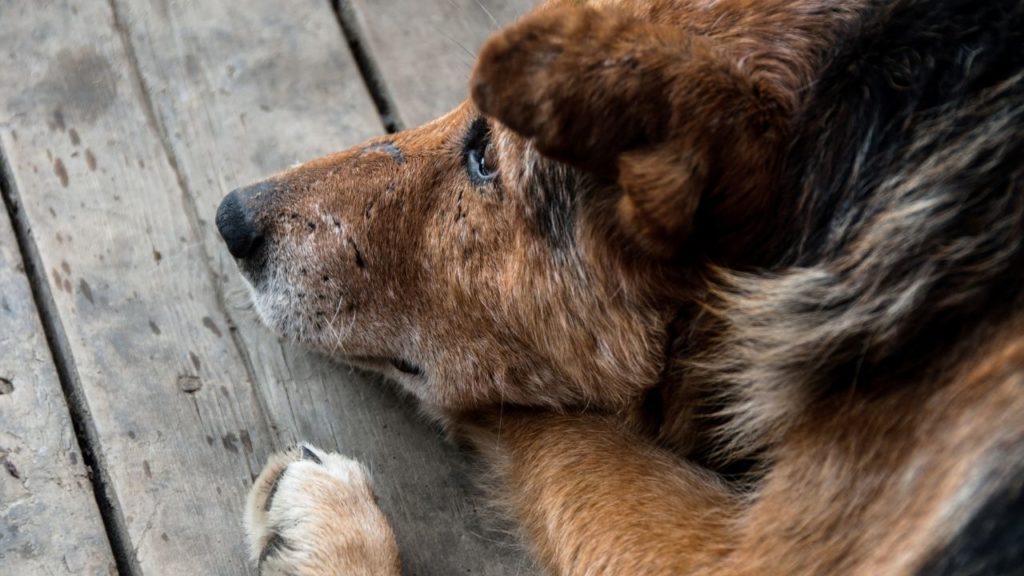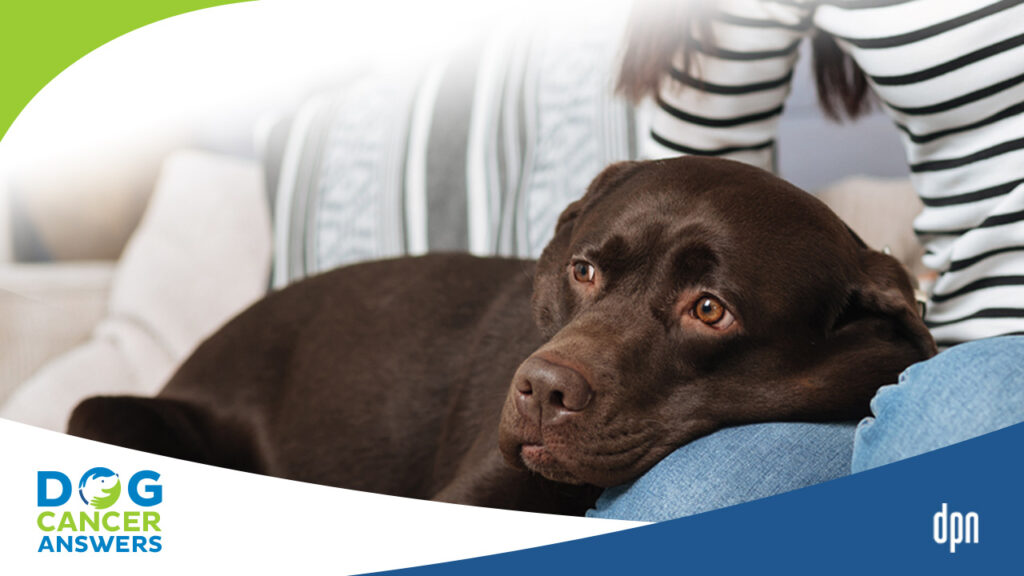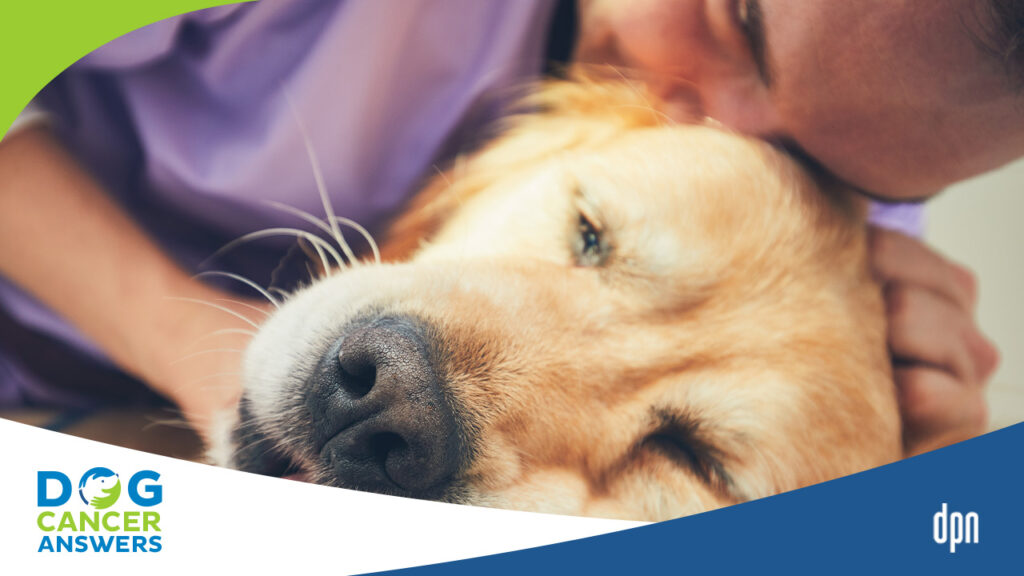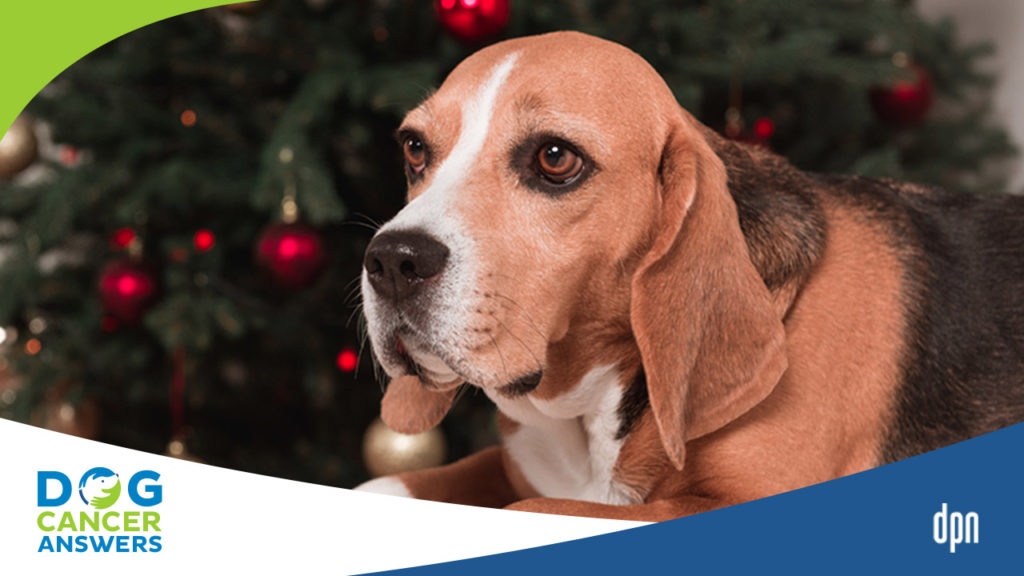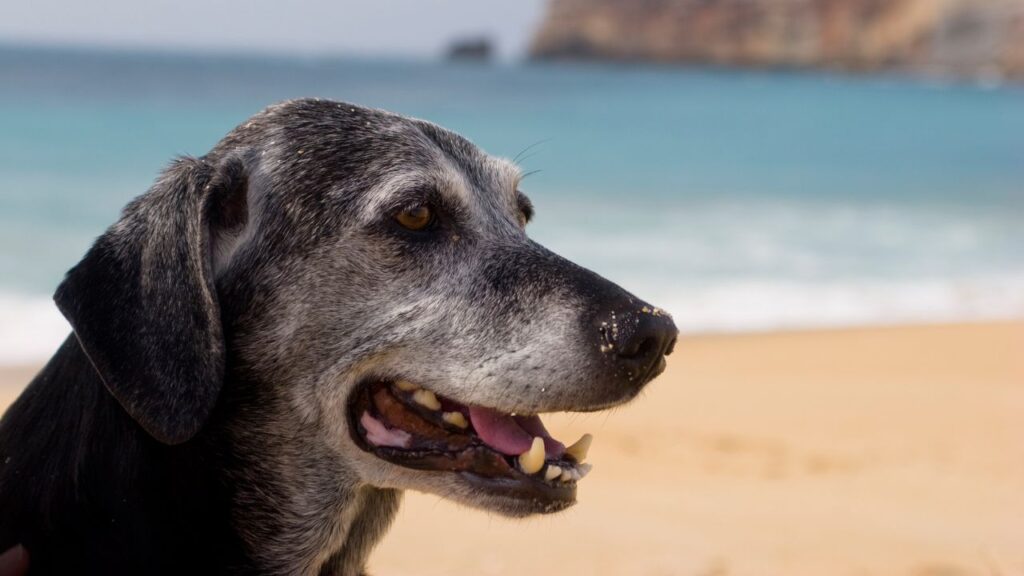Euthanasia is a dreaded topic for most people, but one that all dog lovers will likely face at some point. It is often the kindest and most selfless gift we can give our beloved companions when they are suffering from a serious illness.
Key Takeaways
- Euthanasia is a humane way to end your dog’s life when they are suffering from an irreversible injury or illness. Because your dog is unconscious when they pass, they do not experience any pain.
- There is no single “correct” time to euthanize your dog. The decision should be made by considering many factors including your dog’s prognosis and quality of life, your quality of life, financial constraints, and spiritual or religious beliefs. Your veterinary team is invaluable in helping guide you through this decision-making process.
- With the help of a veterinarian, there are medications that can be given to induce death peacefully. This can be done at your home or at a veterinary hospital and every effort is made by your veterinary team to make this process as comfortable and peaceful as possible.
- Dogs do not know when they are being put to sleep. Medications are given that cause them to quickly lose consciousness and they pass away without experiencing any fear or pain.
- Some dogs will cry when they are first given sedatives or euthanasia medications due to feeling woozy from the medications. This is uncommon and is not a sign of pain.
- Once the final injection has been given, the heart stops beating within seconds to minutes and your dog will pass away peacefully. Immediately after death you may see reflex movements or breaths, but the dog cannot wake up after the final injection has been given.
Dog Euthanasia: Giving Good Dogs a “Good Death”
The word euthanasia, when translated from its Greek origins, means “good death”. The American Veterinary Medical Association defines euthanasia as ending life in a way that minimizes pain and distress.1
However it is defined, euthanasia reflects the desire of the owner and the veterinarian to facilitate the most humane outcome for the dog.
Should I Euthanize My Dog?
If your dog is near the end of their life, you may be starting to wonder about euthanasia. This makes sense, because the goal of euthanasia is to minimize suffering and provide a stress and pain-free death for your dog.2
Can’t My Dog Just Die at Home Naturally?
Many people hope that their dog will die quietly at home, so they don’t have to make this decision, but this happens to relatively few dogs, and when it does it often happens at night or while you’re away.3
It’s a sad statistic, but many guardians of dogs who died naturally at home actually experience a longer or more severe grief period compared to those that made the decision to euthanize.4
Isn’t It Too Early to Talk About Euthanasia for My Dog?
It is never too early to start talking about euthanasia with your veterinarian, especially if your dog receives a life-threatening diagnosis or is showing signs of decline. Talking about it does not automatically mean that your dog is ready for it. It just makes the process easier and helps you get used to the idea before it’s truly time to proceed.
You Are the Only One Who Can Decide When It’s Time
Deciding to euthanize your dog is usually an incredibly difficult and personal decision. Ultimately, you, as your dog’s guardian, are the only person that can make this decision, but involving your veterinary team, and a trusted friend or family member in the decision-making process can be invaluable.
As your dog’s guardian, you know her likes, habits, and behaviors better than anyone. You know better than anyone what you are willing and able to handle – in terms of home care and financially – and you know more about what your dog will tolerate.
Discussing this with your veterinarian can help you to identify changes in your dog’s quality of life. Your veterinarian can also help make sure that all options have been considered and explored so that you are making the most informed decisions possible.
Things to Discuss with Your Veterinarian When You First Think “I May Have to Euthanize My Dog”
It is important to discuss quality of life with your veterinarian, as there are many factors to consider. Quality of life is not defined by a single criterion, but rather is looked at as the dog’s overall physical and mental wellbeing.3 Some experts suggest mobility, mentation (ability to think), hygiene, and appetite are the main criteria to consider when evaluating quality of life.2
Is My Dog Suffering?
There is no single definition of suffering. The AVMA Euthanasia Guidelines suggest considering welfare and suffering in the entire context of your dog’s life.(1) Many people think about suffering in two primary ways: pain that cannot be managed and inability to do things they enjoy.2
Your Beliefs
Every person has their own set of needs and beliefs. The right decision for you and your situation may not be the same for another. Discussing with a close friend or trusted spiritual advisor may be helpful in sorting out your feelings about euthanasia with respect to your own personal religious or spiritual beliefs.
Having these discussions early, before the actual time of euthanasia, will help you prepare emotionally for the end of life.
What Happens During the Euthanasia Process
In a hospital setting, there may be many people involved with euthanasia – receptionists, veterinary technicians and assistants, a doctor, and possibly students (especially in teaching hospitals).
In a home euthanasia setting, there are usually fewer people involved, with only a veterinarian and perhaps one veterinary technician present.
The first decision you should make is whether you want to be physically present during euthanasia.
Do You Want to Be Present?
Your veterinarian will make every effort to allow you to be present throughout the entire process if you want to be. This is an individual decision and there is no right or wrong answer about whether to stay with your pet or not.
To help you decide, consider how you think you will feel about the decision looking back at this time in the future. Will you regret being there? Will you regret not being there?
Also consider how your dog will feel in their final moments. You know your dog better than anyone else. Is your dog stoic, and might prefer to be alone and not burden you? Or would your dog feel more comforted by your presence?
You may also choose to be there only for part of the process. For example, you may prefer to stay while your dog is being sedated but say your goodbyes and step out prior to the final injection.
Rest assured, if you choose not to stay with your dog, they will not be alone. They will be surrounded by loving veterinarians and support staff that will treat them as if they were their own.
The exact process may vary a little between facilities, but there is a general flow that many veterinarians follow for euthanasia appointments.
Euthanasia Check In
When checking in for a euthanasia appointment, administrative tasks are usually completed first, so you won’t have to think about them later on.
This includes signing consent forms, arranging aftercare for the remains, and you may be able to make a payment at this time as well.
They will also ask if you want any keepsakes, such as a paw print, lock of hair, etc. This may be done at the front desk, or in a private room with a veterinary technician or assistant.
The Room Where It Happens
After the check-in process is complete, you will be taken into a room. Many clinics have a “comfort room” set aside for euthanasia appointments that are made to be a little cozier than a typical exam room. These are usually located in a quiet area with a separate exit, low lighting, and comfortable furniture.
If this is not available at your veterinary clinic, staff will try to make the room as comfortable as possible for both you and your dog.
A Delicious Last Meal
Many veterinary clinics will keep some special “contraband” treats on hand – such as Hershey’s kisses or tasty treats that would otherwise be harmful – to share with your dog in their final moments.
The wonderful staff at my hospital have been known to share a slice of pizza, a chicken nugget, or a piece of a cheeseburger from their own lunch with dogs that are still interested in treats prior to their euthanasia.
If there are special treats, toys, or bedding you would like to bring to comfort your dog, please feel free to do so.
Sedation and Catheter Placement
To help make the experience as comfortable as possible for you and your dog, many veterinarians will perform two procedures to start: sedation and intravenous (IV) catheter placement.
Sedation
Sedation involves giving your dog medication to help them relax once they arrive at the hospital. This is most often given as a subcutaneous or intramuscular injection and takes 10-15 minutes to take effect. Once the sedative is given, it is important to be calm and quiet and allow your dog to rest while the medications take effect.
Sedation can make dogs feel dysphoric – uneasy, restless, or unable to settle down – and this will cause some dogs to “fight” the sedation. They may appear more stressed, cry or act agitated. While this is very uncommon and usually is not a sign of pain, it can be very stressful for you and make an already difficult experience even more challenging. If these behaviors do not resolve within a few minutes, it is OK to ask your veterinary team for help in calming your dog with additional or different anesthetics.
While sedation can reduce the stress of being at the hospital, to avoid the possibility of dysphoria many clinics will only use it if your dog is extremely stressed or if it is needed to place the IV catheter, opting instead to give an IV dose of a sedative, such a propofol, immediately before the euthanasia solution to help them fall asleep quickly before the final injection.
Catheter Insertion
Euthanasia drugs are given by IV, so a catheter is placed to give direct access to the bloodstream. This can help minimize complications, particularly in animals with delicate blood vessels. This also eliminates the need to access a vein more than once, should additional medications need to be given. It also allows you to stay as close as possible to your dog during the procedure.
Many clinics will offer to place an IV catheter in the room with you, but sometimes it is better to take the dog out of the room for a few minutes for the IV catheter placement. If this happens, you will only be separated from your dog for a few minutes, and they will be with loving staff the entire time. Some clinics will do the IV catheter placement while you are completing the check in paperwork to minimize time you spent away from your dog.
A Private Moment
At this point, once your dog is sedated, but before the euthanasia drugs are given, your veterinary team will ask if you are ready for the veterinarian or if you would like some time alone with your dog. If this isn’t offered, but you need some time alone with your dog, just ask.
The goal of your veterinary staff is to make this sad time as easy on you and your dog as possible. They understand you may need quiet time alone with your pet, and they will allow you to spend as much time as you want with them before the final injection and afterward.
The Final Injection
The most commonly used medication for the final IV injection is pentobarbital. Pentobarbital is a type of anesthetic but is rarely used for surgery anesthesia these days. The effects of pentobarbital are dependent on the dose used. When an overdose is given, pentobarbital causes the heart to stop.
Before the injection, your veterinarian will describe the process for you, so you know what to expect.
As mentioned above, your veterinarian may use a heavy sedative such as propofol before the final injection. Within a few seconds, your dog will become very sleepy and may even fully fall asleep. Your veterinarian will then give the final injection and your dog’s heartbeat will gradually slow down until it stops completely.
This process is usually quick, taking only seconds to minutes. In dogs with certain conditions, such as those causing poor circulation, the process may take longer. Rarely, a second injection of pentobarbital may be necessary.
After the injection is given, your veterinarian will confirm that death has occurred by using a stethoscope to listen for a heartbeat. They will give you a verbal acknowledgement when death has been confirmed.1
After your dog has passed, feel free to take as much time as you need. Clinic staff will take care of your dog’s remains after you have left unless you plan to take them home for burial.
Immediately After Death
Your veterinarian will advise you of some possible physical changes immediately after death. These are a reflex and do not mean something has gone wrong. You could think of these changes as nerves firing one last time. Common changes include:
- Urination or defecation
- Agonal breaths (open-mouth reflex breathing)
- Muscle twitching
- Vocalization
- Eyelids remaining open
During this time, you may want to close your dog’s eyelids, hug or kiss them if it provides you comfort. Please feel free to do so.
Reducing Stress During Euthanasia for Dogs and Their Humans
Euthanasia is an incredibly stressful time for most people, but there are some steps you can take ahead of time to reduce stress for both you and your dog.
- Don’t rush. Take as much time as you need and know that your veterinary staff understands this need. Afterward, allow yourself as much time as you need to grieve.
- Bring support. If it will be helpful to you or you are worried about driving home afterward, bring a friend or family member to the appointment with you. If you would prefer to be alone during the appointment but need support after, it is OK to ask them to wait outside.
- When possible, plan for aftercare, whom you want to be present, where you want to do the euthanasia (at home vs in the veterinary hospital), if you want any keepsakes, etc. This is not always possible but can reduce stress of making these decisions last minute.
- If euthanizing at the hospital, bring something familiar from home, such as your dog’s favorite blanket, toys, bed, or treats.
- Try to stay calm, speak to your pet in a calm, quiet voice, and pet them in long, slow strokes. You may also learn some acupressure points ahead of time that are effective for calming.
How Do I Know It’s Really Time to Let My Dog Go?
Knowing when you should euthanize your dog is one of the biggest concerns of a dog guardian when considering euthanasia. Sometimes the choice is obvious, such as a critically ill dog with no viable treatment options for their condition. Other times, however, it is not as clear and can be confusing when considering the many factors involved.
It’s best to have as much information as possible to make the decision comfortably and you should never be afraid to ask your veterinary team for more information. It may also be helpful to talk to someone who is familiar with your pet (such as a close friend or family member), but who does not see them every day. They may be able to provide a different or more objective perspective on how you and your dog are doing.
Some considerations when making the decision to euthanize include:
- The dog’s quality of life.
- Your quality of life. For example, if caring for your dog is interfering with your ability to care for yourself, this is an important consideration.
- Financial concerns. If caring for your dog is taking a toll on your finances to an unacceptable level, this is an important consideration.
- Your ability to meet your dog’s needs. If, for example, your large dog needs to be carried up and down stairs, but you are physically unable to do it, this may factor into your decision.
It is totally normal to second-guess yourself when making such an important decision; this does not mean it was the wrong decision. It just means that it is a very hard decision to make.
The decision of when to euthanize is unique to every situation and there really is no single right or wrong decision.
Good Days and Bad Days
Keeping track of good days and bad days can help with the decision-making process. Everyone has occasional bad days, but when bad days start to outnumber good days, it may be time to consider euthanasia.
This can be tracked by simply marking each day on a calendar, or there are calendar apps specifically for tracking quality of life, such as the Grey Muzzle app.3
Quality of Life List
A common suggestion for evaluating quality of life is to make a list of your dog’s top five favorite activities – for example, walks, eating, car rides, playing fetch, climbing on the couch to look out the window – and ask yourself if they are still able to consistently enjoy at least three of these activities. If not, it may be time to start thinking about euthanasia.
Another option for evaluating your dog’s quality of life is using a quality-of-life worksheet or survey, such as this one from OSU. This can be completed independently by you and other members of the household and then compared at regular intervals (such as once a week) to help track changes in quality of life over time.3 This can help you more objectively evaluate any decline in your dog’s condition and give you valuable information when you are considering euthanasia.
Though this approach is usually done to track changes over time, this type of survey may also be used to help evaluate quality of life to aid in making an immediate decision if needed.
Medical Evaluations
Your veterinarian cannot make the decision to euthanize for you, but they can certainly help you with evaluating your dog’s quality of life and advise on any treatment options available for your dog.
Many dogs guardians report that support and input from their veterinarian was very important in helping them through the decision to euthanize.5 Consulting with a hospice or palliative care veterinarian can also be helpful in gaining additional perspective or discussing options for providing comfort while you are going through the decision-making process.
Window of Time
There is no specific “right time” to euthanize; instead, there is usually a window of time in which euthanasia can be the right decision. Many people are concerned about making the decision too soon, but its more common that people report later that they feel they waited too long.3 Depending on the disease process, this window can be long or short6 and your veterinarian should be able to provide some insight into what you may expect.
You Will Know
It may sound cliché, but most of the time you will know when it’s time to euthanize your dog. You will feel it in your gut.
Most of us are so connected to our dogs that if we stop worrying long enough to listen to them, they will tell you when they’re ready. Silly as it may seem, sit down and have a conversation with your dog about how she’s feeling and if she wants to continue. Then sit quietly and listen. She will tell you.
We tend to get caught up in trying to figure out the correct moment to euthanize, but there is no way to know. All you can do is make the best decision you can, based on the information you have. The decision to euthanize is one made from love and when this is the case, there’s really no way you can be wrong.
Home Euthanasia for Dogs vs. In-Hospital
Euthanasia can be done in the veterinary hospital, or it can be done at your home.
Home euthanasia is a popular option because it allows your dog to stay in a familiar environment for her final moments. It can also be comforting for us and gives children and other pets a chance to be present or to say goodbye.
You can ask if your regular veterinarian is able to make a house call for euthanasia. Many are not able to provide this service, so they may instead refer you to a veterinarian who specializes in home euthanasia.
Home euthanasia may not be a good fit if your dog is extremely protective of her home, or if you do not want the memory of your dog dying at home. Usually, an appointment for home euthanasia must be made in advance to allow the veterinarian to plan travel time to and from your home.
Emotional Considerations
Most people experience profound grief with the loss of a pet. Please remember to practice giving yourself compassion and taking all the time you need to process.
For You
Take the time you need to grieve. Seek out friends and family members who understand the bond you share with your dog. Seek out a therapist or pet-loss support group if needed.
Many of us want the closure of being there for our dog’s euthanasia, but if you do not want to be present, you do not have to be, and there is nothing wrong with that.
Ask questions if you need to and ask for extra time with your dog if you want it. Veterinary staff all love animals, and they understand what you’re going through.
For Your Dog
Try to stay calm, even as your heart breaks. Reassure your dog that you love her, and it will be over soon. Pet her with long, slow strokes to calm and comfort her. Bring a favorite bed or blanket from home that smells familiar.
What to Do with the Remains
When possible, aftercare should be decided before euthanasia is performed. You will need to decide if you want your dog cremated or buried. State and local laws may dictate what options are available for animal remains.1 Some areas may allow home burial, but others might require dogs to be buried in a dedicated pet cemetery.
If allowed in your area and you have opted for home burial, you will be able to take your dog’s body home immediately after the euthanasia appointment. Some hospitals may have a relationship with a burial service and can take care of that for you. If you opt for a home burial, please be sure your dog is buried appropriately so that wildlife will not be able to access the body.
If you have opted for cremation, the veterinary hospital will usually handle the logistics of this for you. Some hospitals have their own crematory, while others use a separate service.
Your veterinary staff will also usually offer a variety of options for keepsakes such as paw prints, nose prints, hair clippings, special urns, etc.
Why Isn’t Euthanasia for Dogs Free?
The cost of euthanasia is a delicate subject. It is a very hard part of the job for veterinary staff. This is especially true if your veterinarian has known you and your dog for a long time – they are saying goodbye to a friend too.
Despite all of the emotional feelings around euthanasia, there are still many hard costs associated with it. There are the medications, materials for the catheter, and the time that the veterinarian and staff spend with you and your dog. Ironically, euthanasia appointments are some of the more costly appointments for your veterinary practice to offer in terms of labor and time. They prioritize you and your comfort and make an effort to give you whatever you need, often taking much more time than other appointments.
Financial Help for Dog Euthanasia
If you have financial concerns about euthanasia, there are resources that you can turn to for help. Asking your veterinarian is a good place to start. They may be able to provide a discount or offer some options of ways to keep costs down. They may have a have donated funds set aside to help those who have to say goodbye to their pets. They may also know of some local options that are less expensive or free.
Most pet insurance companies cover at least some of the costs of euthanasia. If you have pet insurance for your dog, be sure to ask if they cover this service. Of course, this will only help if you already have an active plan in place.
Your local humane society or animal shelter may be able to offer free or reduced cost euthanasia or may have a charitable fund to be used for this purpose.
CareCredit, a credit card specifically for medical bills, may be helpful for offsetting the cost of euthanasia and spreading out the payments over a longer period of time. Ask your veterinarian if they accept CareCredit. You can typically see if you qualify very quickly by applying online or at your veterinarian’s office.
Is There Something I Can Do at Home to Help My Dog?
It is important to seek help from a veterinary professional when facing this decision. They can help you formulate a hospice plan, or, if you are at the very end of life, they can help prevent and alleviate your dog’s suffering. This usually requires the use of medications that are only available through a veterinarian.
It’s important to follow your veterinarian’s instructions during hospice care. Any attempt to manage end-of-life care or euthanasia without professional help can unintentionally prolong and worsen your dog’s suffering. Medications used incorrectly can cause acute liver, kidney, or heart problems or worsen your dog’s condition and make her feel worse than she already does. Only a veterinary professional will be able to guide you through this process and help your dog pass away peacefully using the appropriate medications.
More Euthanasia Resources
If you would like even more information on euthanasia, here are some additional resources that may be helpful:
- Leary S, Underwood W, Anthony R, et al. AVMA Guidelines for the Euthanasia of Animals: 2020 Edition. 2020.
- Cooney KA, Chappel JR, Callan RJ, Connally BA. Veterinary Euthanasia Techniques: A Practical Guide. Ames, IA: Wiley-Blackwell; 2012.
- The Ohio State Veterinary Medical Center. How Will I Know? Assessing Quality of Life and Making Difficult Decisions for Your Pet. 2019. https://vet.osu.edu/vmc/companion/our-services/honoring-bond-support-resources-pet-owners. Accessed January 21, 2023.
- Davis H, Irwin P, Richardson M, O’Brien-Malone A. When a pet dies: Religious issues, euthanasia and strategies for coping with bereavement. Anthrozoös. 2003;16(1):57-74. doi:10.2752/089279303786992378.
- Bussolari C J, et al. The euthanasia decision-making process: A qualitative exploration of bereaved companion animal owners. 2019. https://bereavementjournal.org/index.php/berc/article/download/1024/1032
- McVety D. Dog euthanasia, Hospice, and Lap of Love: Dr. Dani McVety. Dog Cancer Answers Podcast. https://dogcanceranswers.com/dog-euthanasia-hospice-and-lap-of-love-dr-dani-mcvety/. Published December 31, 2022. Accessed January 21, 2023.
Topics
Did You Find This Helpful? Share It with Your Pack!
Use the buttons to share what you learned on social media, download a PDF, print this out, or email it to your veterinarian.
